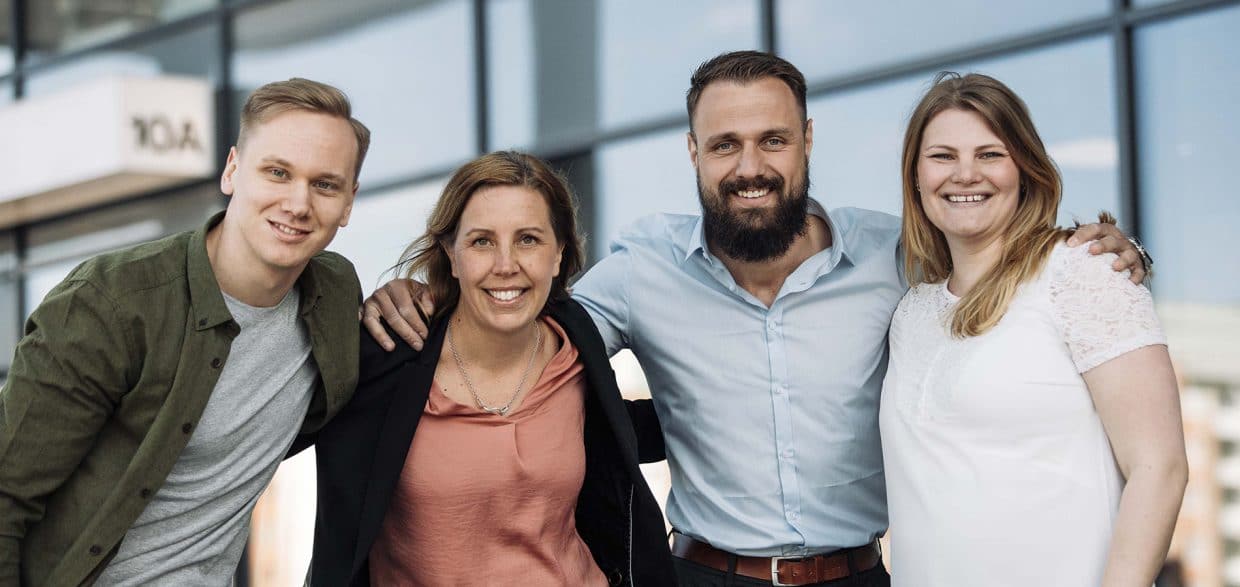When you work in different kinds of teams, for example, in an application management team, you need to make sure you have a good working group so that you can deliver quality results to the customer.
In this blog post, Therése Sundberg, Management Leader at Softronic, shares her best experiences to make sure you have a team that both thrives and is effective.

Create motivational dialogue
In most of my project teams we use the Agile method, which increases the amount of dialogue and communication in the team. I recommend starting the day positively with a stand-up meeting. As part of our routine, everyone in the team has to answer three questions:
- What am I happy with from yesterday (and which took us closer to our sprint goal)?
- What am I going to do today to make sure that we reach our goal?
- Any obstacles? – Do I need help or a sounding board?
By formulating questions like the ones above, we can create a ‘living’ dialogue and focus on what we actually think we have done well. Sometimes it can be difficult when you are really frustrated and have not achieved what you wanted, but over time you learn to focus on what is constructive. If I am talking about what I have done well, the others chip in and confirm this. So we motivate and encourage each other. If I explain what I need help with, this will give other people the confidence to ask for help.
These simple questions have allowed us to find real solutions to problems; they are not used to decide whether I am good or bad.
Create solid and shared goals – get everyone involved from an early stage
Although it can be difficult to formulate shared goals, the mere fact that they are shared will make it more likely that we will achieve them. These goals can focus on soft values, processes or what needs to be done over a period of time to meet a specific need. I believe that if we get everyone involved as early as possible in requirements or changes, we will be in a better position to create and achieve solid goals.
Firstly, it is a good idea to give everyone time by themselves to read up on the subject beforehand. This makes it easier for people to contribute and be involved. If you gain some prior knowledge or are given the opportunity to update your knowledge or read around the subject, it often sparks curiosity, engagement and interest. It will also make it easier to reach the goal if everyone has been involved from an early stage. Start by spreading knowledge and creating curiosity so that you can formulate a goal together.
Put together a complementary team — team members with different strengths
If you want to expand and introduce new members or put together a brand new team, try to create a team with people who complement each other. Feel free to cast a wide net when trying to find different strengths. Combine people who are quite low-key with people who are outspoken, those who are focused with those who are visionary, those who are decision-oriented with those who are prudent, those who are habitual with those who are innovative. In the long term, it will give the team extra strength when working together.
But this can also create risks. It is important to speak openly about each other’s strengths and create an atmosphere where you have the courage to say what you yourself need help with. One tip is to have retrospective meetings using pre-formulated questions, such as:
What do I think is positive about what I have been thinking about or have done since last time
What do I think is positive about what you have been thinking about or have done since last time
What do I think is positive about what We have been thinking about or have done since last time
Then back all three up with the following questions:
What do I want Me, You, Us to think about or do by next time
How do I want Me, You, Us to do it?
Feel free to let the team answer these questions in peace and quiet by scheduling time for this in the calendar and sending the results to the person holding the meeting. The answers can then be formulated at the meeting to give everyone the opportunity to put their thoughts forward. They can explain what they need to make them feel even better, even more confident or even more enabled, while getting to know their colleagues better.
Be a listening leader – my team teaches me
As a leader in application management, my most important job is actually to listen. Often I have to hold back and not come up with solutions, but instead try to listen and ask questions. When I do this, I almost always find that there are better solutions than the ones I had in mind or there are other more important needs to the ones I was thinking about.
We also work a lot on values and pillars taken from Scrum. But that is for another post.
So this is what we think about when working together on different customer projects. By offering a close-knit team with different personalities and experiences, our customers will gain a better delivery; so here are my tips for people who lead teams.
Blog post written by: Therése Sundberg for Softronic AB

